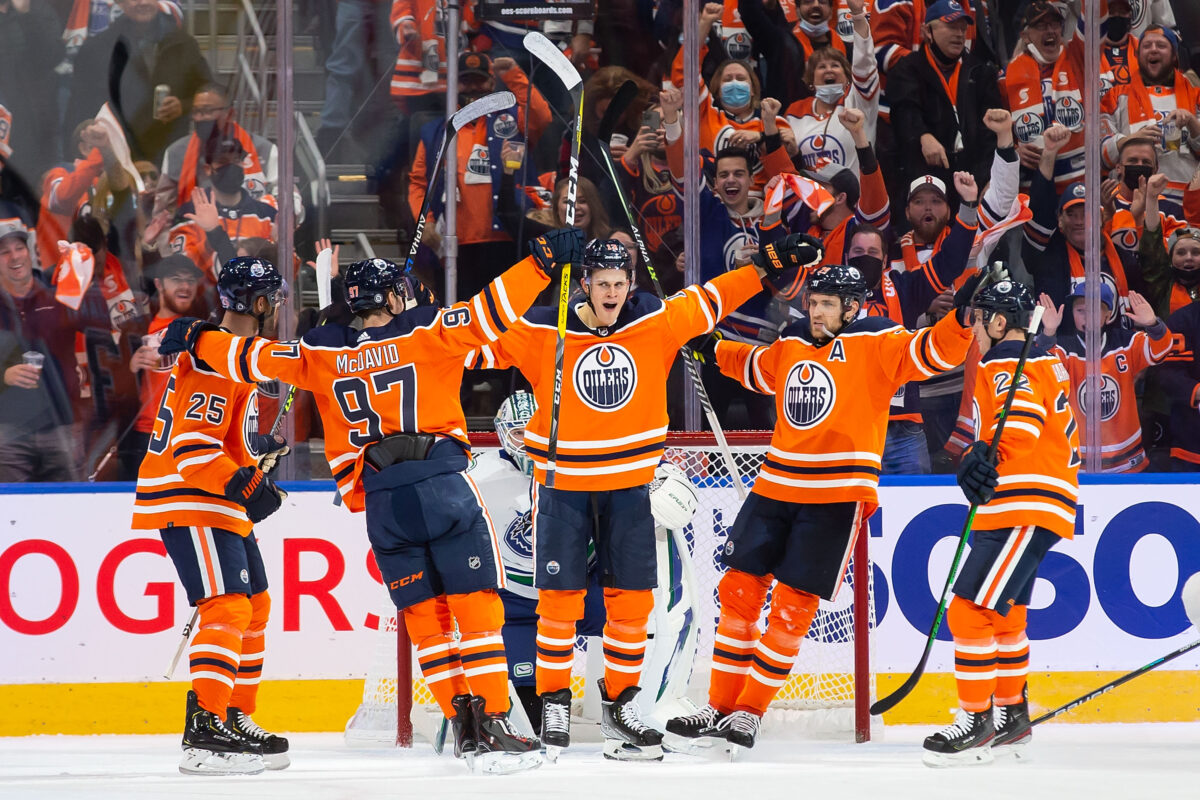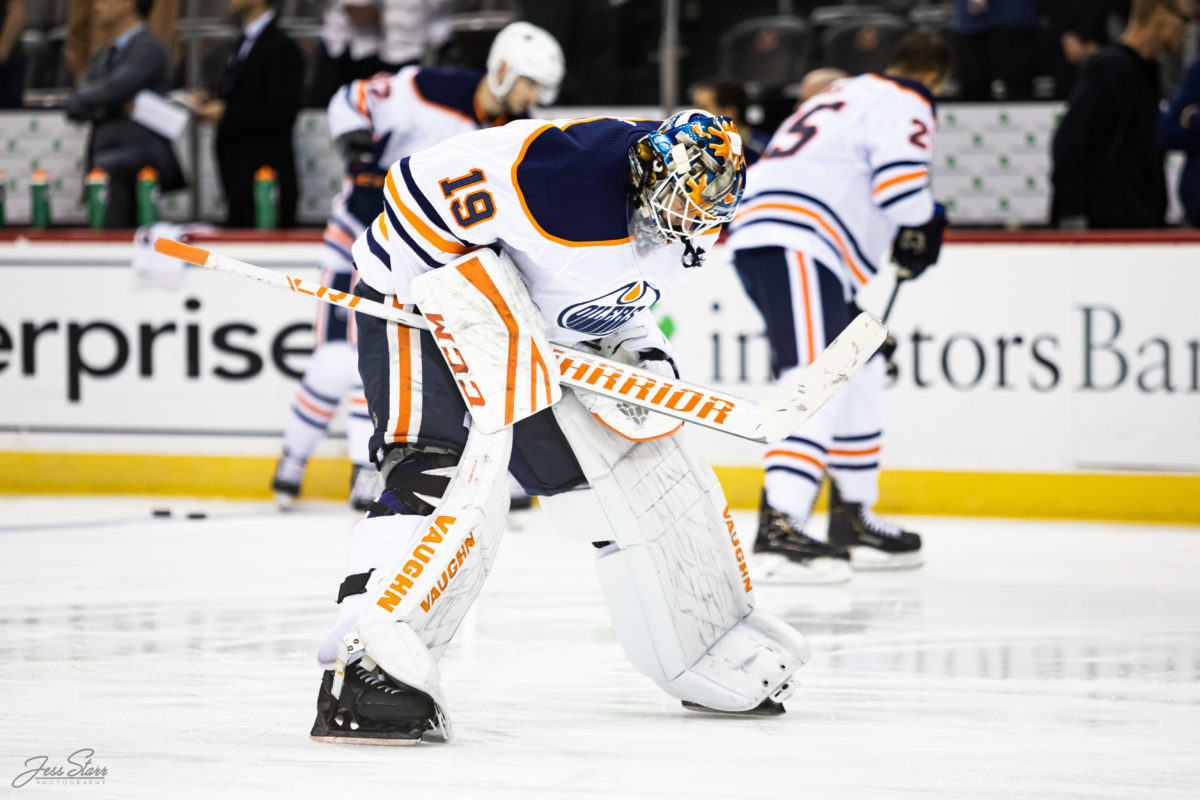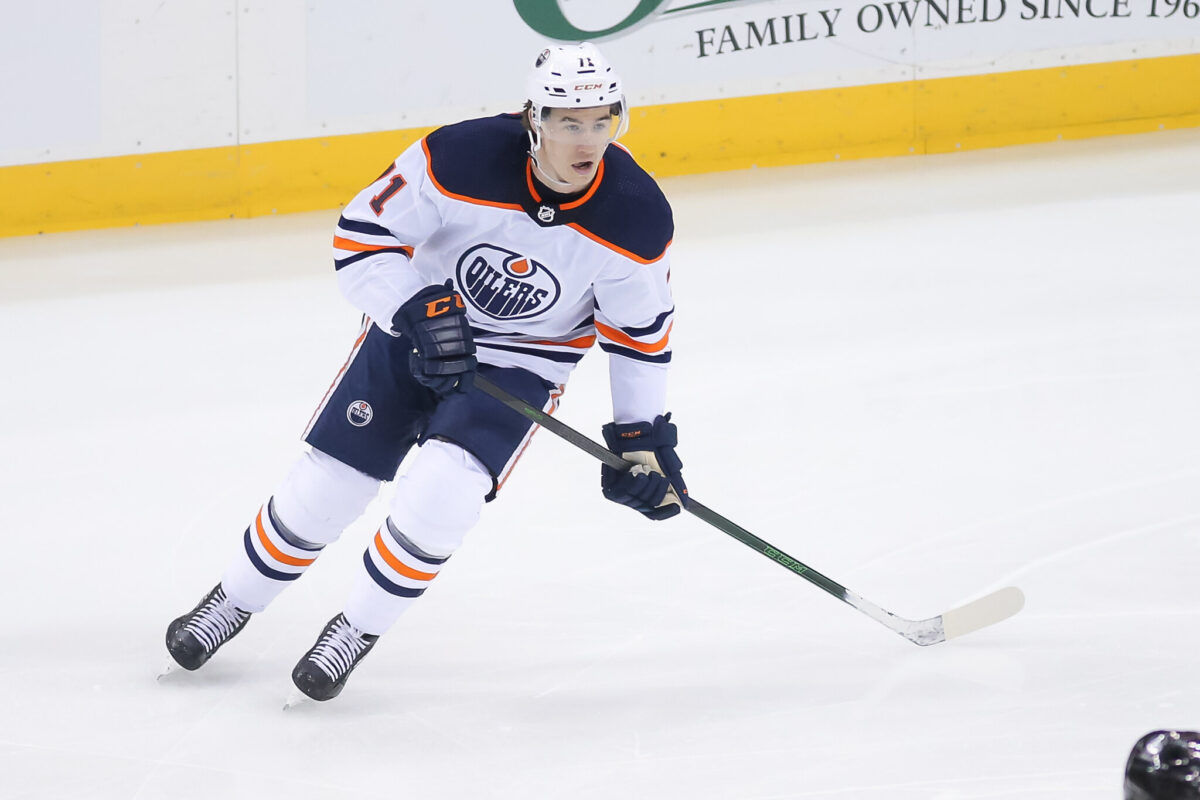At the halfway mark in the season, the Edmonton Oilers sit one point back of the second wild card spot and eighth in the conference in points percentage. It has been a very up and down season, one of the biggest in team and NHL history.
The Oilers were 16-5-0 and first in the NHL on Dec. 1, 2021, winning nine of the first 10 games of the season. But then things fell apart and they lost 13 of the next 15 games before earning nine points of the past 10. Unless the Oilers get a capable starting goaltender, we are not going to see them play as good as 9-1-0, but we also aren’t going to see them miserably drop to the bottom of the standings either. There’s a happy medium that I think most fans and the entire team would be happy with, and that is a record good enough to at least earn a playoff berth.

Time after time we’ve seen that anything can happen once the playoffs start, and that’s all the opportunity the Oilers need. There are three big storylines to follow in the second half of the season to really judge how this season and the future will look like in Edmonton. What moves will be made before the trade deadline? Will the Oilers find an answer to their struggling special teams now that they have been playing better at even strength? Meanwhile, the depth of the team, in particular forwards will be analyzed.
Oilers’ Trade Deadline Plans
The Oilers have about a month and a half before the March 21 trade deadline. They would be smart to make a move before that deadline comes because this is a year they can’t afford to miss the postseason, for the coach and general manager, star players, and the city.
Every team and every fan knows the largest concern on the Oilers’ roster is goaltending. It wasn’t addressed because general manager Ken Holland thought that the tandem of Mike Smith and Mikko Koskinen would be good enough and play like they did last season. Nobody can accurately predict injuries and how it will affect the team, but not going after someone younger and better this past offseason has caused major problems.
You may also like:
- Oilers’ Skinner in Line for Vezina Trophy Winning Season
- Oilers: 8 GMs Who Would’ve Been Better Hires Than Stan Bowman
- NHL Rumors: Oilers, Maple Leafs, Capitals, Kuznetsov News
- Edmonton Oilers’ Point Projections for 2024-25
- Edmonton Oilers Name Stan Bowman General Manager
Smith has been injured and can’t seem to stay healthy for any length of time, and Koskinen has been very streaky this season, and despite being paid like a starting goaltender, he is a backup. Stuart Skinner is just breaking into the NHL and the Oilers can’t rely on him to carry the load either. This has caused the need to fill the glaring hole in net. Many names have been thrown out there, rentals or not. But if the Oilers fail to acquire a goaltender before the trade deadline, it will be seen as a disaster and almost like management isn’t banking on this season.

To go out and make any big moves, the Oilers will have to move money out. The most likely candidates are Koskinen ($4.5 million), Zack Kassian ($3.2 million for two more seasons), Kyle Turris ($1.65 million), and Tyson Barrie ($4.5 million for two more seasons).
Related: Oilers’ William Lagesson Starting to Earn Coaching Staff’s Trust
Not only do the Oilers need a capable starter for right now and for the future, it would be in their best interest to acquire a defensively-minded defenceman to help limit the high-danger chances. Predict what you want about which goaltender the Oilers are going to trade for, but almost every name that may even be available has been thrown out there at this point.
Oilers’ Special Teams a Concern
It was incredible what the Oilers’ special teams were accomplishing at the beginning of the season. Realistically, the power play wasn’t going to continue clicking at a pace of over 50 percent. (“Player grades, Games 1-10: Surreal special teams power Oilers to record start”, Edmonton Journal, 11/8/21) But with how it started, a complete falloff wasn’t expected either to now drop out of first place in the league. With the talent on the top unit and what we know they’re capable of, the power play should be well above 30 percent after that start.
Things are looking up, as Ryan Nugent-Hopkins is back healthy and contributing on the top unit. He may not be looked at as a major factor, but at the very least he has a dangerous wrist shot from the off-side and is able to help cleanly bring the puck into the offensive zone while keeping possession. Evan Bouchard has also received more time on the top power-play unit while Barrie is sidelined with an injury. This has allowed him to feature his booming slapshot more and in better position. He has scored twice on the power play in the past five games, but the Oilers have failed to convert on any other chances in that time. They are coming close, so it’s just a matter of time before some pucks start going in again for them.
While the Oilers’ power play now sits in third at 27.8 percent, the penalty kill has been horrible as of late, not being able to make the timely stops and a lot of the time being a big contributor to the loss. They have had a penalty-kill percentage of 70 percent over the past five games which isn’t very good, while on their seven-game losing streak before that they allowed 10 goals on 23 opportunities, a percentage of 56.
The penalty kill has noticeably picked up a bit over the past five games because Nugent-Hopkins and Zach Hyman are back, while head coach Dave Tippett has also been utilizing Leon Draisaitl shorthanded. This is a good move and should pay off, even creating more offensive chances, seeing as Draisaitl is one of the league’s best players, very offensively talented, big, and has a massive blade on his stick to get in the lanes. The Oilers’ penalty kill is 23rd in the NHL at 76.9 percent, which tells you how well it was clicking early in the season. They will need to pick that back up to at least 77-80 percent for the rest of the season.
Oilers’ Forward Lines & Depth
Recently the Oilers forward lines have looked like they are the deepest of any lineup formed since Connor McDavid or Draisaitl have been part of the team. The depth was being tested on their losing streak, but then all of a sudden Nugent-Hopkins is back from injury, Hyman is back, and they signed Evander Kane.
Now, two players who have been playing on the third line for a good chunk of the season have been pushed to the fourth line to form a high-energy line that has seen a lot of time working the puck around in the offensive zone and creating chances, even scoring in one of the two games since being put together. The line of Ryan McLeod, Devin Shore, and Derek Ryan are all capable of taking faceoffs and Shore and Ryan are highly regarded defensively, a lot of the time relied on to kill penalties.

This line isn’t a defensive reliability, and has surprised with how much they are able to keep the opponents hemmed into their zone and tire them out. McLeod complements the others perfectly since he can easily carry the puck up the ice and into the offensive zone while using his good hands and quickness down low. His speed also allows him to backcheck.
There will of course be shuffling of the other three lines between games and in the middle of games based on performances, as players like Jesse Puljujarvi and Kassian need to get going and play the game we all know they are capable of. Recent showings by them may get them demoted or moved around to spark their play, both offensively and physically.
There should be no worries about McDavid and Draisaitl, as it is nearly impossible to slow them down for too long. They will remain at the top of the league while Kane continues to return to form as he gets more reps in.
There shouldn’t be too much to worry about with the forwards now, and though we may see one more minor move, the focus should be on the back end with both defence and goaltending.
